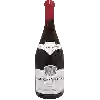
Château de MeursaultClos du Château Bourgogne
In the mouth this white wine is a powerful with a nice freshness.
This wine generally goes well with rich fish (salmon, tuna etc), shellfish or mild and soft cheese.
Taste structure of the Clos du Château Bourgogne from the Château de Meursault
Light | Bold | |
Dry | Sweet | |
Soft | Acidic |
In the mouth the Clos du Château Bourgogne of Château de Meursault in the region of Burgundy is a powerful with a nice freshness.
Wine flavors and olphactive analysis
On the nose the Clos du Château Bourgogne of Château de Meursault in the region of Burgundy often reveals types of flavors of tree fruit.
Food and wine pairings with Clos du Château Bourgogne
Pairings that work perfectly with Clos du Château Bourgogne
Original food and wine pairings with Clos du Château Bourgogne
The Clos du Château Bourgogne of Château de Meursault matches generally quite well with dishes of pasta, rich fish (salmon, tuna etc) or shellfish such as recipes of pasta with porcini mushrooms, zucchini gratin with tuna and tomato or pasta shells.
Details and technical informations about Château de Meursault's Clos du Château Bourgogne.
Discover the grape variety: Cabernet-Mitos
An intraspecific cross between Cabernet Sauvignon and Dyer du Cher obtained in 1970 in Weinsberg, Germany. It can be found in Germany, Switzerland, etc. and is virtually unknown in France.
Last vintages of this wine
The best vintages of Clos du Château Bourgogne from Château de Meursault are 2017, 2018
Informations about the Château de Meursault
The Château de Meursault is one of of the world's great estates. It offers 48 wines for sale in the of Burgundy to come and discover on site or to buy online.
The wine region of Burgundy
Bourgogne is the catch-all regional appellation title of the Burgundy wine region in eastern France ("Bourgogne" is the French name for Burgundy). Burgundy has a Complex and comprehensive appellation system; counting Premier Cru and Grand Cru titles, the region has over 700 appellation titles for its wines. Thus, Burgundy wines often come from one Vineyard (or several separate vineyards) without an appellation title specific to the region, Village or even vineyard. A standard Burgundy wine may be made from grapes grown in one or more of Burgundy's 300 communes.
The word of the wine: Erinosis
Generally benign condition caused by a very small mite. The infested leaves show blisters on the upper surface, sometimes reddish, sometimes green, to which corresponds on the lower surface a dense felting, first pinkish white, then brownish or reddish.














